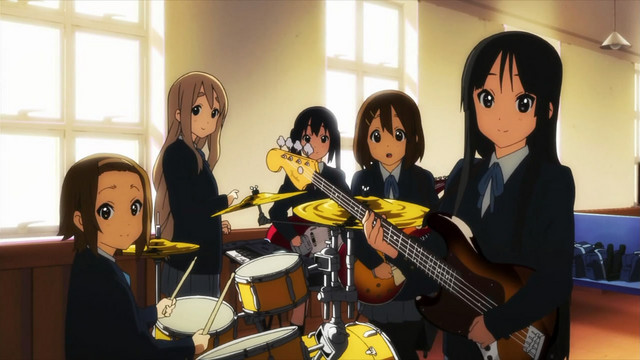
This current anime season marks the 10th anniversary of the airing of the second season of Kyoto Animation classic K-ON!, entitled K-ON!! (with two exclamation marks denoting which is the second series). The TV anime series and subsequent anime film were at one point the most popular anime franchise in Japan, breaking home video records with each volume that was released and putting then-newbie director Naoko Yamada (A Silent Voice, Liz and the Blue) on the map. Yamada, at 24 years old, won the Tokyo Anime Award for K-ON! in 2010 and 2011, making her the youngest anime director to do so, and is still — even a decade later — one of the youngest directors in anime at such a high level. You can learn more about her in a piece I wrote back in December.
But Yamada wasn’t the only aspect of K-ON! to be put on people’s radars. The small township of Toyosato (it’s the 20th smallest town in Japan, and of those 20 towns, has the 5th smallest population size) is the home to the Former Toyosato Elementary School, the real-life inspiration behind the iconic school from K-ON!.
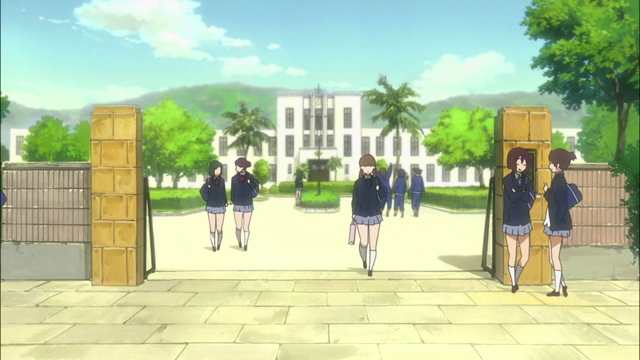
The actual town in K-ON! is never named and is purposefully obscured. In Season 2, Episode 4, the girls go on a school trip to Kyoto by Shinkansen — where they pass by Mt. Fuji. Toyosato in real life doesn’t have a Shinkansen stop, it's far too rural — and is only around two hours away by the local line from Kyoto. Mt. Fuji is near Tokyo.
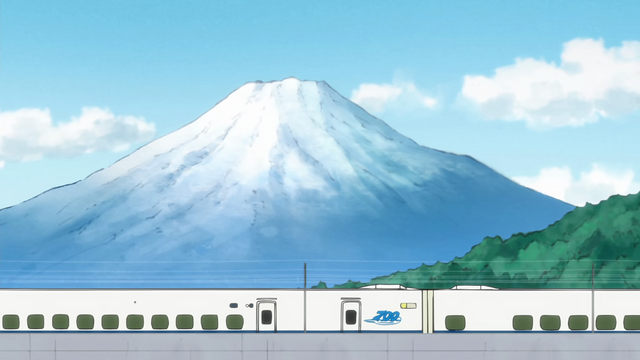
Mt. Fuji in K-ON!!
So today, let’s take a look at how K-ON! has helped preserve the small town of Toyosato, and how the influence of the popular series can still be felt in the region, even a decade later.
A Small History of Toyosato, Shiga Prefecture

Photo: Daryl Harding
Toyosato is situated in the closest neighboring prefecture to Kyoto, Shiga Prefecture, within the district of Inukami. Measuring at only 7.80 km2, it is the smallest town in the district and the smallest town in Shiga Prefecture. The town is known throughout Japan for its agriculture, sake, and the Former Toyosato Elementary School — which gained national attention in the 2000s when the then-mayor proposed demolishing the school building due to its age and lack of earthquake-prevention construction. He was ousted from his position due to the controversy (but later reelected). The school went through the reconstruction needed to bring it up to code, reopening in May 2009 — a month after K-ON! debuted on Japanese TV — as a cultural center and library for Toyosato.
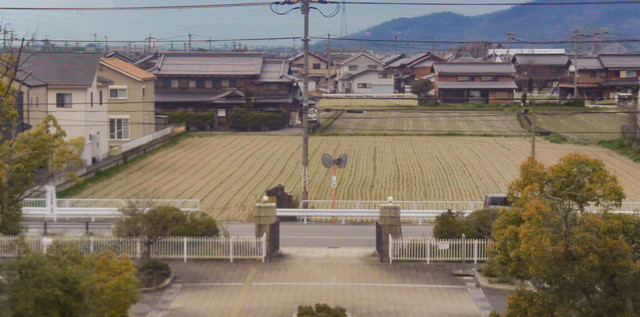
Photo: Daryl Harding
Even now, the town is mostly just agriculture, with the true view out of the real-life Light Music Club windows being that of vegetables being grown across the road.
K-ON! in the Former Toyosato Elementary School
Since K-ON! aired, the Former Toyosato Elementary School, which was built in 1937, has undergone a slight transformation. The real-life room where the light music club would have been in the anime has been recreated to a tee, featuring cakes, cups (including Azunyan’s kitty cup), a Gibson Pre-'08 Les Paul Standard in Heritage Cherry Sunburst (the same model used for Yui’s ‘Giita’), and even a perfect reaction of the name cards from the second opening theme from K-ON!!.

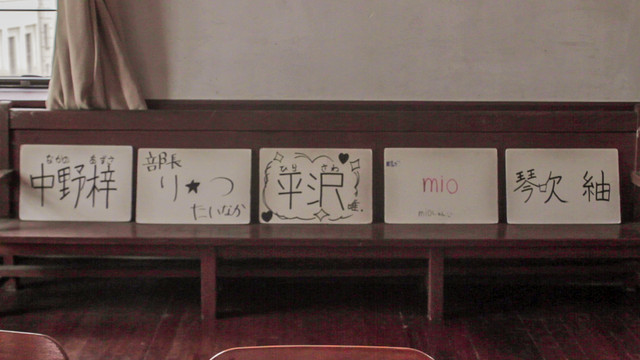
Photo: Daryl Harding
While Ton-chan was absent from the light music club room, the signature turtle and rabbit do exist and can be found on the railing of the school leading up the stairs. One has to imagine the painstaking process the background artists at Kyoto Animation went through in recreating the scenes in the school in flawless detail.
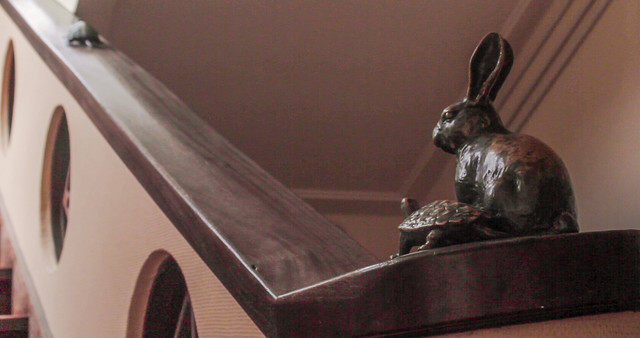
Photo: Daryl Harding
Even walking the halls, I was swept up in the nostalgia for a place I had never been to. I felt — because of my love for the series — that I knew every nook and cranny in the school, without ever having been there. I could picture Ritsu dragging Mio through these halls as I was walking through them myself. Though the school was a lot smaller than I had imagined. While it’s hard to think of how a full high school, in an area with a higher population, would be able to fit into the 2.5 leveled school, it made sense for a small town like Toyosato.

The halls of the Former Toyosato Elementary School with some K-ON! fans walking down them (Left photo: Daryl Harding)
Former Toyosato Elementary School’s Facilities
Other than being an anime pilgrimage site, the Former Toyosato Elementary School has its own facilities — including a museum on its own history that features an original phone (in the booth!) from the 1930s. As a cultural site, the school is home to a daycare center, a cafe (which features K-ON! themed drinks alongside beverages created with hometown products), the town’s library (which was closed on the day), and guided tours of the school, letting you learn more about the history of the school and area.

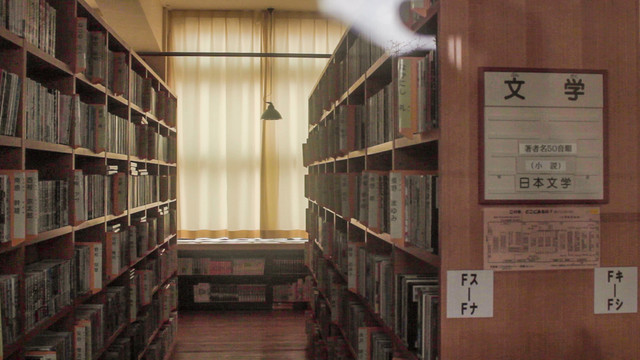
The closed, and dark, library (Photo: Daryl Harding)
The school can also be rented out for events, birthday parties, and even as a filming location. The live-action Haganai film used the school as a basis for the fictional school in the film, which made for some interesting juxtapositions between the sweet K-ON! girls and the slight raunchy nature of the gang from the Neighbors Club.
On a regular basis, the Former Toyosato Elementary School is used for K-ON! themed events. Every year a group called Toyosato Tea Time holds events for each of the main characters in the series in the school, where people travel from all over Japan to drink tea, eat cake, and reminisce over their love for the series. According to their website, while participant numbers are getting smaller, they were able to successfully hold events in early 2020 for Mio’s birthday in January and Ui’s birthday in February.
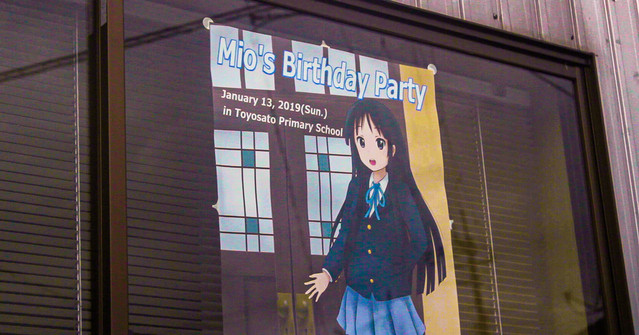
Photo: Daryl Harding
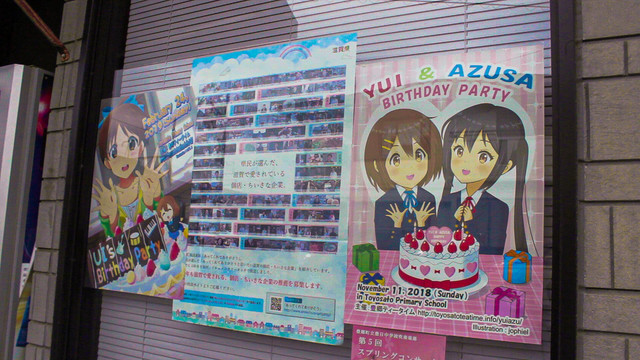
Photo: Daryl Harding
K-ON! in Toyosato Town
Outside of the school, little remnants of K-ON! can be seen throughout Toyosato Town. From the above poster being littered on windows of small businesses around the local train station to cut-outs of Ho-Kago Tea Time guiding you to the school, you can see how the town is thankful for the tourism the anime series has brought to it’s less than 7,500 residents.
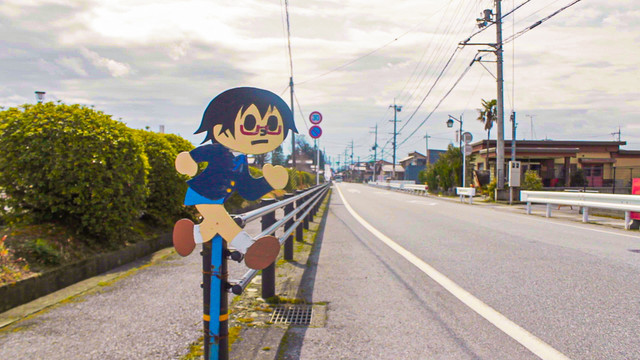
Photo: Daryl Harding
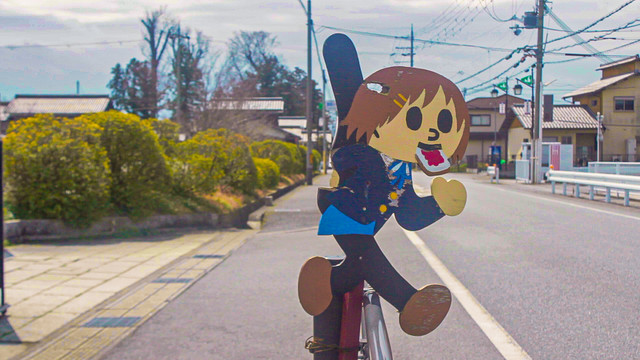
Photo: Daryl Harding

Photo: Daryl Harding
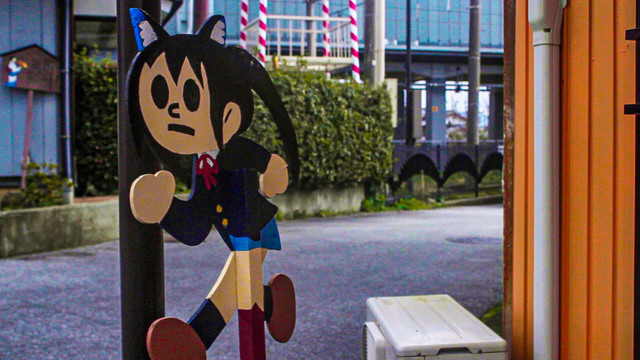
Photo: Daryl Harding
A majority of the small businesses around the train station are just your usual small-town shops — it even lacks a convenience store, the closest is technically in the next town over! If you walk out from the Ohmi Railway Toyosato Train Station — which only has a train coming every hour and is usually just one carriage — you’ll find an unassuming closed shop during the day.
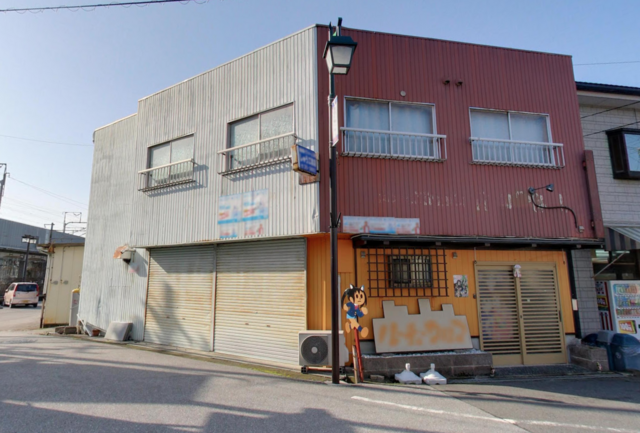
Image via Google Maps
Or, if you were like me and you spent literally all day at the Former Toyosato Elementary School, you’ll be greeted by a noren (warm curtain) featuring Yui and Azusa peering out the door. When you walk in, you soon learn that this place — which isn’t even on Google Maps — is a K-ON! themed bar and shrine, full of figures, memorabilia, and some of the biggest K-ON! fans in Toyosato.
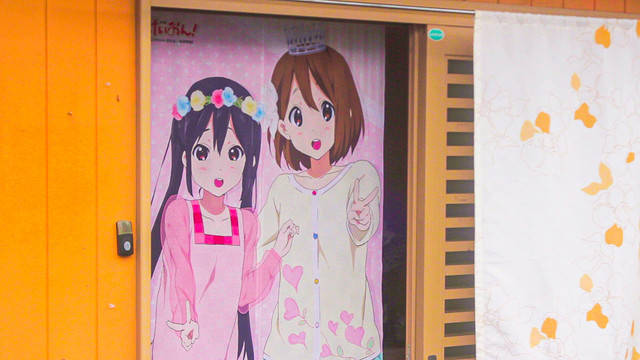
Photo: Daryl Harding

Photo: Daryl Harding
As I walked into the bar, which was more just a large room filled with more K-ON! gear than they knew what to deal with, I was guided to a table that was full of K-ON! and other Kyoto Animation-related merchandise, with a 5th-anniversary train hidden under the shelving. Key animation sheets don the walls, making for an interesting wallpaper, and even in the toilet, posters from old magazines of the girls from K-ON! watch you. But most importantly, on the menu are K-ON! themed drinks.
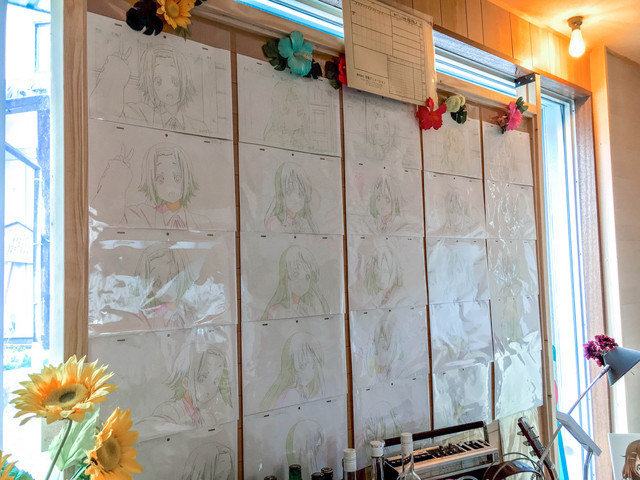
Photo: Daryl Harding
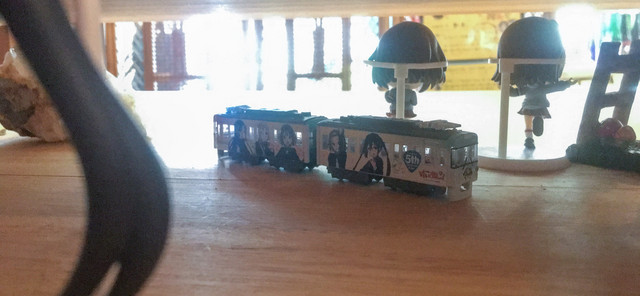
Photo: Daryl Harding
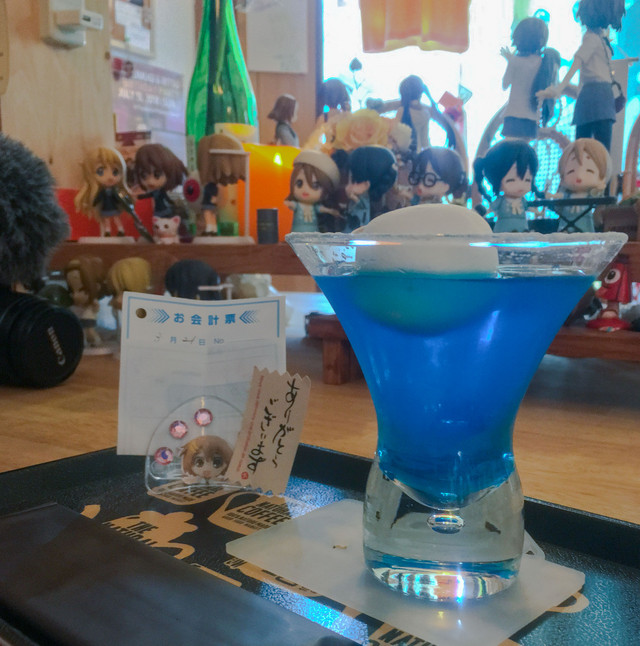
Photo: Daryl Harding
As a fan of Mio, I had to try the Mio-themed drink (which can be seen above), and was pleasantly surprised by how sweet it was (and how much drink was put into it — especially after a full day of walking!). I spoke with the owners, who also worked at the bakery next door, and they had no idea what K-ON! was before the anime brought people to their town. So, they sat down, watched the series, and fell in love with everything about it, wanting to share that love with the townsfolk and travelers.
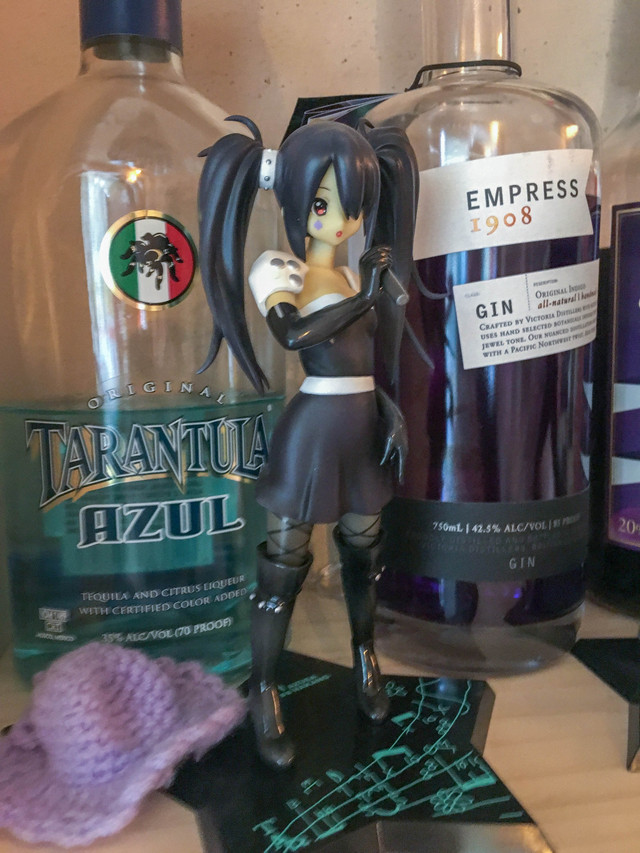
Photo: Daryl Harding
A few blocks over from Toyosato Train Station is Tamaya, which sadly, I didn’t get to visit. It’s a K-ON! themed udon restaurant where patrons are surrounded by more K-ON! merchandise.
K-ON! Helping Toyosato Across Japan
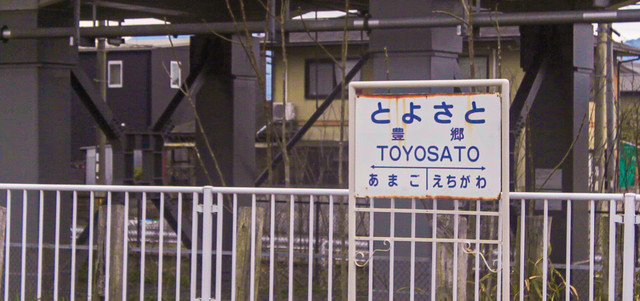
Photo: Daryl Harding
K-ON! doesn't just help boost Toyosato with tourism yen inside the town, but also brings in money using the series through the Furusato Nozei system. Furusato Nozei, or "Hometown Tax" in the closest English translation, is a system that lets anyone in Japan donate to any town/city/region in the country, and in return, they receive an item native to that region. What's more, due to how the system works, it’s fully tax-deductible come tax time, where the Japanese government will return the full amount you donated minus 2,000 yen (US$18) as an administration fee.
Usually, people receive local rice, or sake, maybe meat in return for their donation, but not in Toyosato, where you can get exclusive K-ON! merchandise. While the Furusato Nozei system is currently going through its yearly revamp after the end of the Japanese tax year in April, and no K-ON! gear is currently available, previously you were able to receive handmade K-ON! keyrings in two sets for around 30,000 yen (US$280).

Not only that, Japan Post — the national mail carrier — issued K-ON! themed stamped based on the school, which was sold both online and in stores around the country. According to reports, the first-run of stamps wasn’t exactly based on K-ON!, but used certain real-life shots of the school that mimicked those found in the anime. The second-run used images from the anime series.
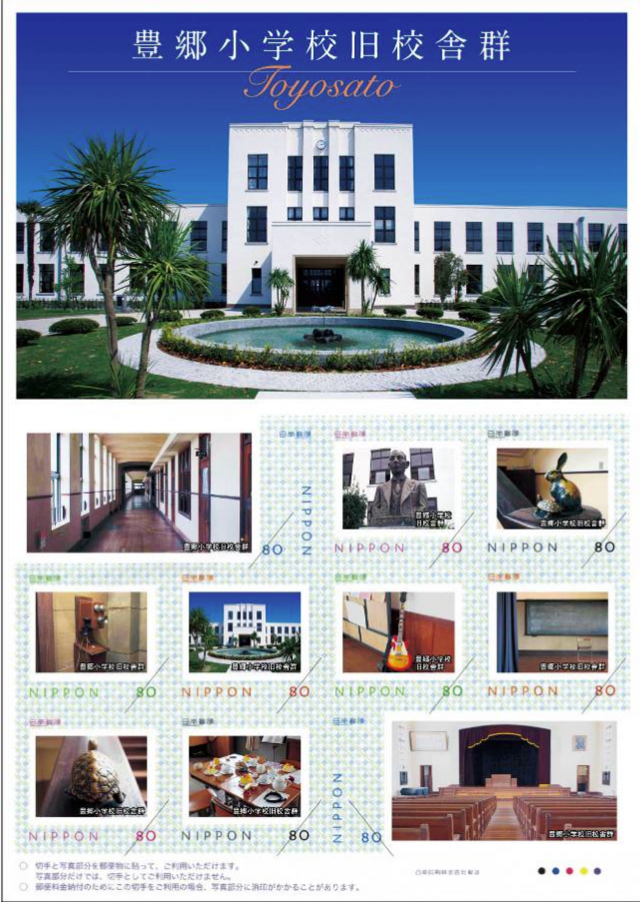
This was the highest resolution I could find of a stamp set from 2010
In 2013, the Former Toyosato Elementary School was designated as a Tangible Cultural Property by the Japanese government, giving the building certain rights and hailed as a structure that has “social value” to the Japanese people. This means the owners of the school are able to easily get loans for repairs and gives it protection against being demolished or changed in any way. While K-ON! wasn’t likely a defining factor for the designation, being given more national attention in one of the most popular anime of all time probably helped the paperwork get pushed through.
The Lasting Legacy of K-ON! and Toyosato
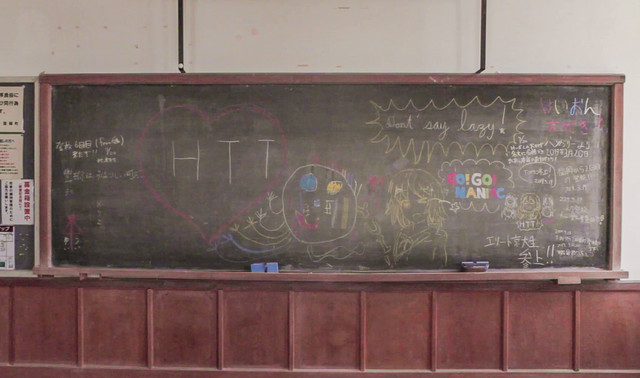
Photo: Daryl Harding
The legacy of K-ON! and Toyosato is intimately linked, even ten years on. Walking around the town and school, I met many people who were there for the same reason I was, wanting the experience of walking the halls that inspired the team at Kyoto Animation for a series that I loved.
Waiting for the train at Toyostato Station (which as previously mentioned, only come every hour), I met with a couple from the United States who were visiting anime pilgrimage sites throughout Japan. We spoke for 20 minutes on what K-ON! meant to us, how we first saw the series, and who our favorite characters were. While K-ON! may have ended nearly ten years ago, the emotions, feelings, and economic impact it has had continue to drum along on the beat of time.
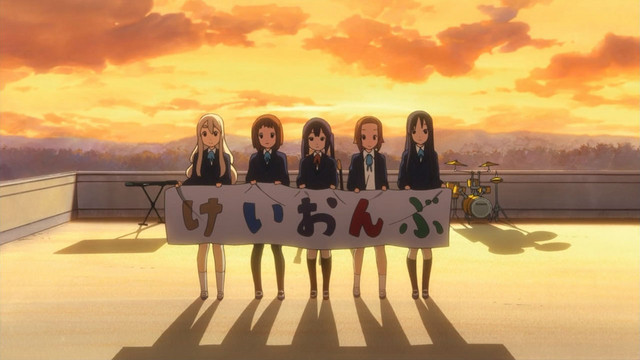
I traveled to Toyosato in March 2019 before the impact of what is happening in the world and the devastating attack on Kyoto Animation. Even then, I was overwhelmed with emotion walking into the light music room, unable to hold back my tears. While I didn’t get a photo of me ugly crying — thank Haruhi — I got to fulfill the dream of drinking tea in the Light Music Club room.
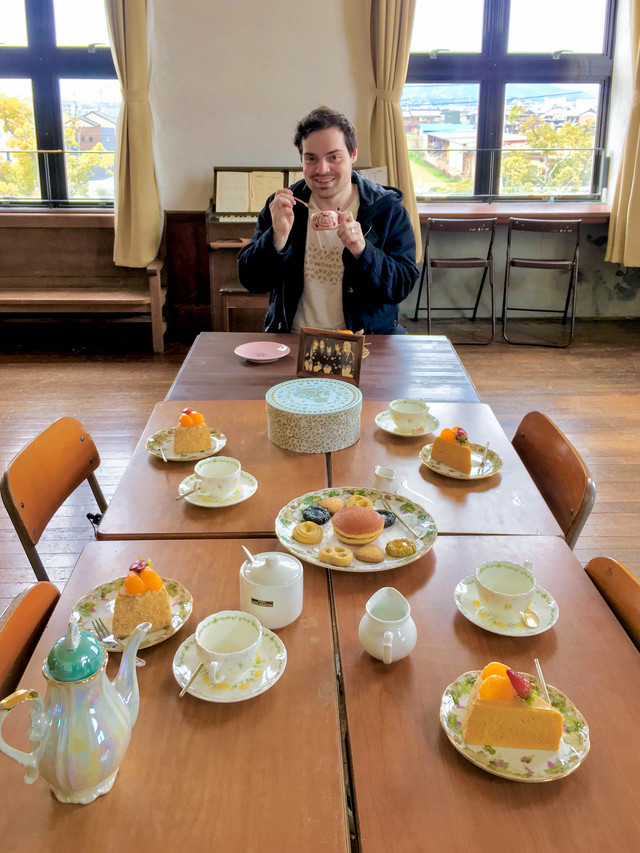
Photo: Daryl Harding
Daryl Harding is a Japan Correspondent for Crunchyroll News. He also runs a YouTube channel about Japan stuff called TheDoctorDazza, tweets at @DoctorDazza, and posts photos of his travels on Instagram — though he's not doing much traveling at the moment.
Source: Latest in Anime News by Crunchyroll!
Comments
Post a Comment